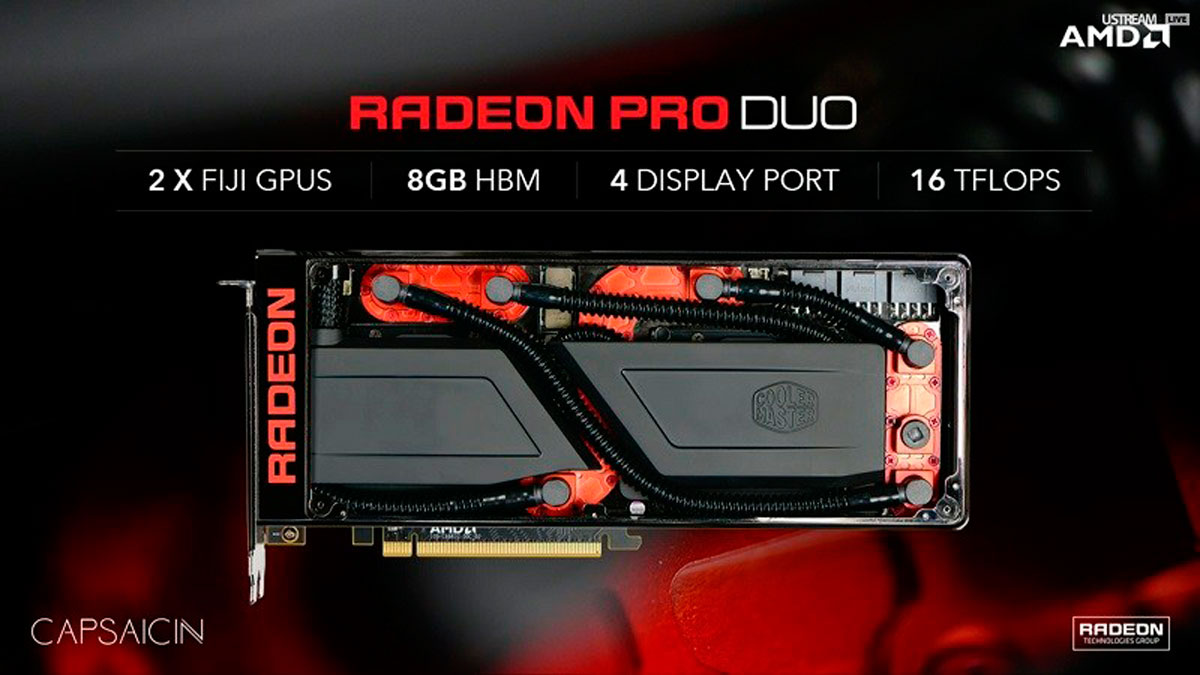A couple of days ago, AMD invites us on a conference to hear their plans for the future of VR Gaming, specifically about the exciting things that they have unveiled at GDC 2016. Since GDC 2016 is now at full swing, and if you missed AMD’s live announcement earlier this week, let us quickly note what AMD just did at the GDC 2016 Capsaicin Event, featuring the Radeon Pro Duo and how are they trying to change the landscape of the Virtual Reality battlefield.
AMD Radeon Pro Duo Unveiled
First off, AMD unveiled the Radeon Pro Duo – which is essentially, a dual AMD Fiji GPU based graphics card slapped in one PCB. Think of it as a Dual R9 Fury X. The card features 16 TFLOPS of compute performance, with 8GB HBM (4+4GB), with 4096-bit bus memory. The card is liquid cooled similar to that of the Fury X with its 120mm radiator, with price to top it off at 1, 500 USD.
It ain’t cheap, and so does VR development. Thus, AMD stated that it is specially made for the VR content development. There’s no mistake though, as this is the fastest Dual GPU based graphics card to date, toppling the R0 295X2 and the Titan Z on the 3DMark Fire Strike’s presets at 1080P, 1440P, and 4K UHD.
Based on the bare PCB layout below, the Radeon Pro Duo features a PLX chip connecting both the HBM equipped Fiji GPUs, with separate power delivery systems tailored specifically to fit within the profile of a water-cooled system. The card appears to feature 3 8-pin power connectors, which in theory could supply the card with 525W of power together with the 75W capable PCI-E slot. AMD stated that the card has a TBP of 350W which is reassuring.
Based on the images, we could see that AMD put a lot of effort into the cooling of this card – with cold plates running along the power delivery system which are connected via a series of pass through tubes. It’s worth noting that the Radeon Pro Duo is cooled by Two separate pumps from Cooler Master.
83% Market Share As of Date
AMD is also happy to announce that they’ve estimated around 83% of market share around the globe when it comes to VR capable systems. That of course includes the Play Station 4, and Xbox One consoles, which are literally powered by AMD. With that said, it’s also easier for AMD to continue their support for VR development via better VR optimized graphics, and technologies that could be otherwise hard to achieve should they gain just a fraction of the market share.








